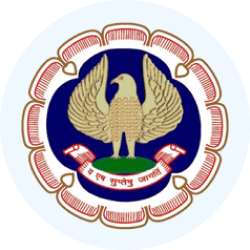CA Intermediate Exam > CA Intermediate Videos > Crash Course for CA Intermediate > Risk Assessment and Internal Control - 1
Risk Assessment and Internal Control - 1 Video Lecture | Crash Course for CA Intermediate
FAQs on Risk Assessment and Internal Control - 1 Video Lecture - Crash Course for CA Intermediate
| 1. What is the significance of risk assessment in internal control systems? |  |
Ans.Risk assessment is crucial in internal control systems as it helps organizations identify, analyze, and mitigate potential risks that could hinder their objectives. By evaluating risks, organizations can prioritize their resources and implement controls that effectively reduce the likelihood and impact of adverse events. This proactive approach enhances decision-making and ensures that operations remain efficient and compliant with regulations.
| 2. What are the key components of an effective internal control system? |  |
Ans.An effective internal control system comprises five key components: Control Environment, Risk Assessment, Control Activities, Information and Communication, and Monitoring Activities. The Control Environment sets the tone at the top regarding the importance of internal controls. Risk Assessment identifies and analyzes risks to achieving objectives. Control Activities are the policies and procedures that help ensure risk mitigation. Information and Communication ensure relevant information flows throughout the organization. Finally, Monitoring Activities assess the performance of the internal controls over time.
| 3. How can organizations improve their risk assessment processes? |  |
Ans.Organizations can improve their risk assessment processes by adopting a systematic approach that includes regular reviews of risks, engaging diverse teams for comprehensive insights, utilizing risk assessment tools and frameworks, and ensuring ongoing training for employees. Additionally, leveraging technology such as data analytics can enhance the identification of emerging risks, while feedback mechanisms can ensure continuous improvement of risk management practices.
| 4. What role does documentation play in risk assessment and internal controls? |  |
Ans.Documentation is vital in risk assessment and internal controls as it provides a clear record of the processes, risks identified, controls implemented, and the rationale behind decisions. Good documentation supports accountability, facilitates compliance with regulations, and aids in audits. It also serves as a valuable reference for training new employees and for continuous improvement by allowing organizations to track changes and assess the effectiveness of their controls over time.
| 5. What are common challenges faced in implementing internal controls? |  |
Ans.Common challenges in implementing internal controls include resistance to change from employees, lack of adequate training, insufficient resources, and complexity in processes. Additionally, organizations may struggle with keeping controls updated in response to changing risks or regulatory requirements. To overcome these challenges, effective communication, ongoing training, and management support are essential to foster a culture that values strong internal controls.
Related Searches















